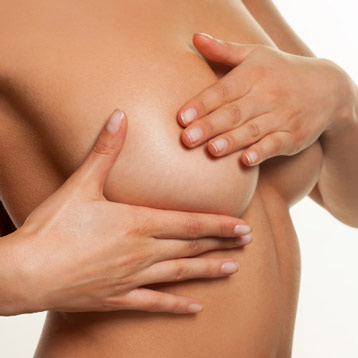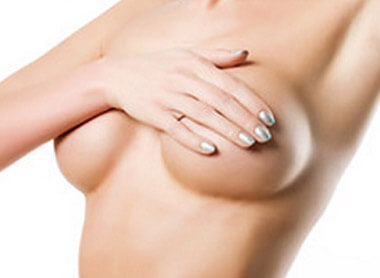Breast Lift (Mastopexy)
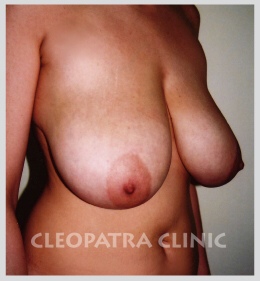
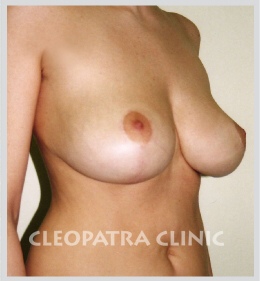

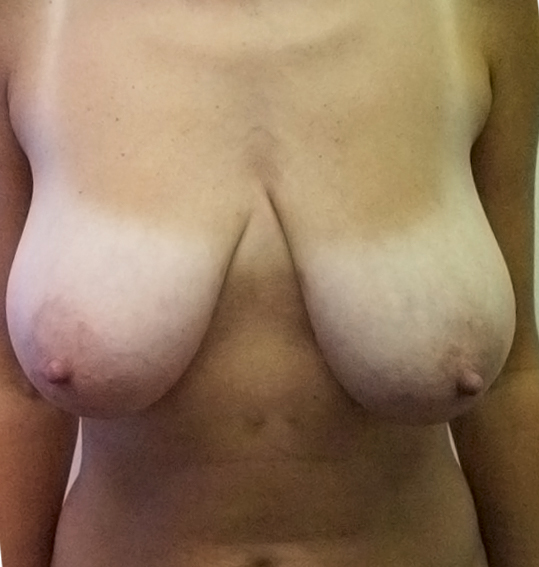
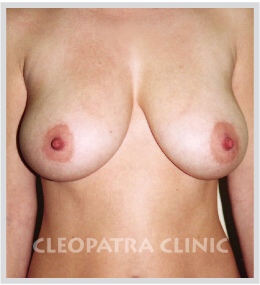
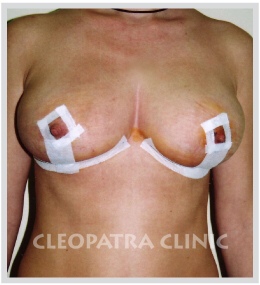
Gallery
Small Modeling - No Breast Reduction Breast Modeling before filling breast implants
before the procedure
after the procedure
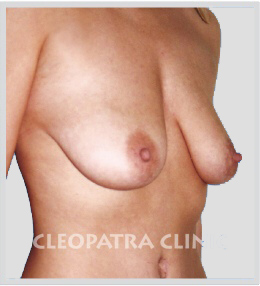
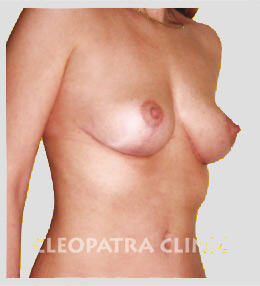
raising the breasts
raising breasts without implants need to fill breast implants
Modeling bigger - no size reduction
before the procedure
after the procedure


raising the breasts
raising the dropped breasts need to fill the breast implant size
before the procedure
after the procedure
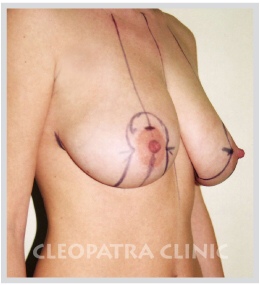
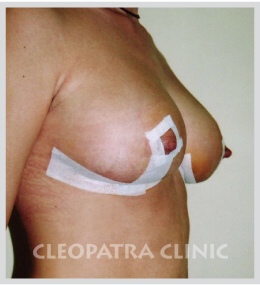
lifting of dropped breasts sketch of surgical procedure
raising the breasts down
Modeling bigger - no size reduction
before the procedure
after the procedure
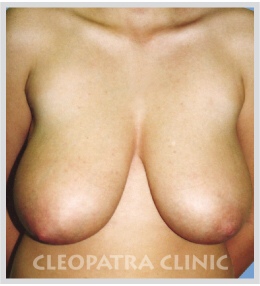
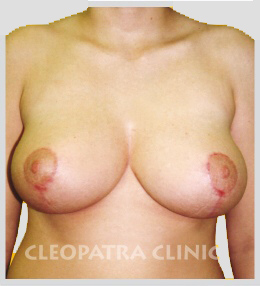
raising the breasts
before the procedure
after the procedure
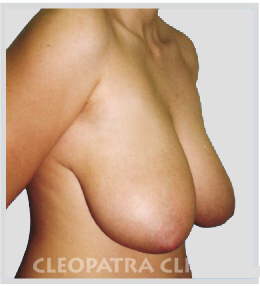
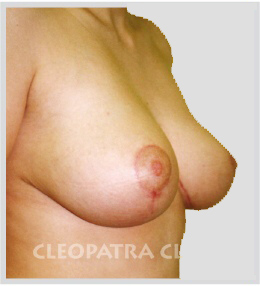
Modeling bigger - no size reduction
before the procedure
after the procedure
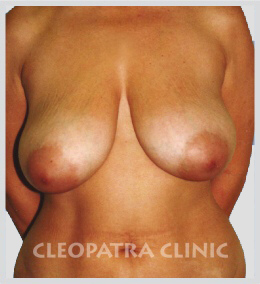
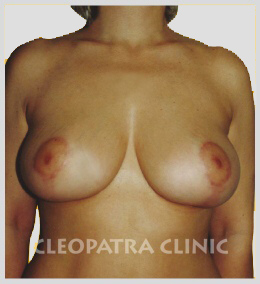
before the procedure
after the procedure
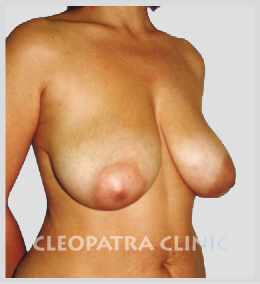
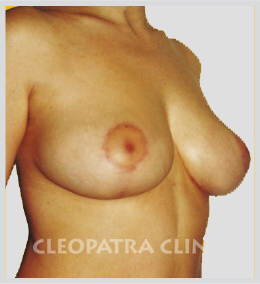
Modeling bigger - no size reduction
before the procedure
after the procedure
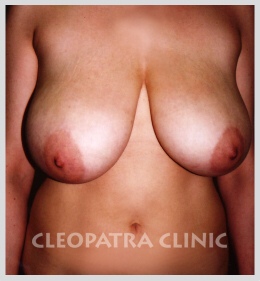
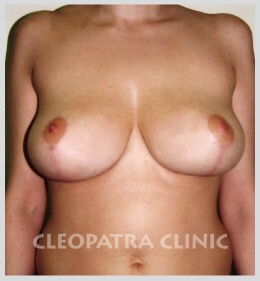
before the procedure
after the procedure


Modeling big - no size reduction
before the procedure
after the procedure
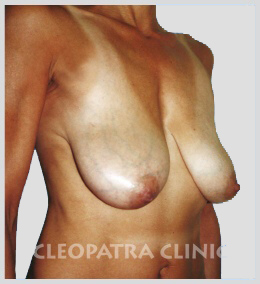
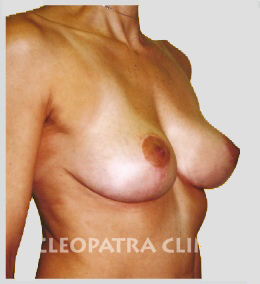
raised breasts straight line of lower breast margins is due to oblique fibrosis
before the procedure
after the procedure


before the procedure
after the procedure
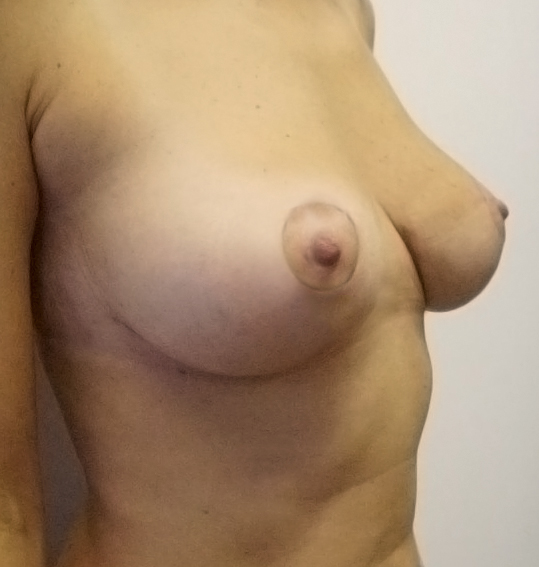
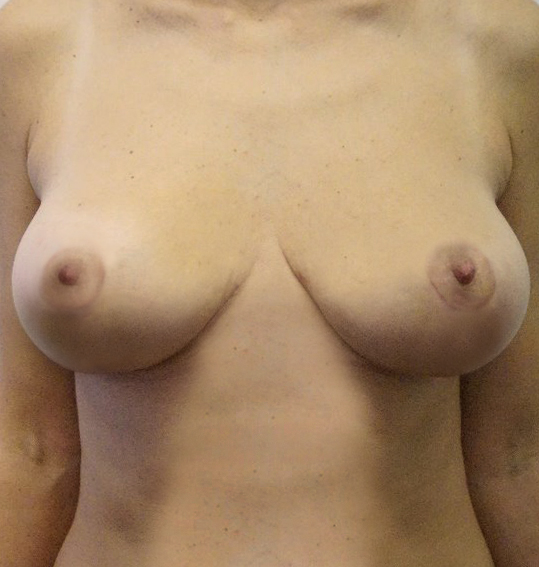
Introduction
Not all women are endowed with breasts of (as they would subjectively see it, in most cases…) satisfying shape & size, during the pubertal growth period. Miscellaneous atypical breast shapes exist. These include breasts sagging or asymmetric, with a ‘tubular’ shape, and excessively large areolas – the darker, more-textured skin surrounding the nipple. Also, protruding bell-shaped areolas with variously shaped nipples, too big & thus drooping breasts, and other ‘irregular’ shapes, may be a bother to women who have these physical syndromes. A lot of women, in addition, feel that breast-feeding or natural aging process have left their breasts in a different size, shape or position on thorax, & become unhappy. These changes occur for these reasons:
- hereditary breast shape defect, including inborn droop affecting one or both breasts
- increased volume of breasts during pregnancy, owing to increased milk glands & a fat- layer
- in the event that breasts grow large rapidly over a short period of time, stretch-marks develop & the skin quality can become less than firm
- loosened tissues & excessively-stretched skin after breast-feeding cause the reduction of milk glands and in many cases, a decreased fat layer
- loss of skin elasticity results in sagging breasts & a change in breast shape, as well. Less volume in the upper quadrants is the first sign of drooping breasts
- aging process, gravity & excessive weight loss or gain takes its toll…even without pregnancy
There are several techniques used for breast lift surgery, including combinations of treatment. In many cases, these multiple treatments can be deployed during a single operation. The crucial factor for deciding treatment, or suite of treatments, is not only the condition of the breasts, but also the general bodily-constitution of the patient, and, naturally, her particular wishes. Sometimes the situation requires applying a different technique on each one of a patient’s breasts. It must be emphasised that a high quality plastic surgery clinic should offer you all surgical methods available. This is so that you will be able to choose the best for you & your breasts. In many cases, conventional solutions may not be the optimum option.
List of techniques used for breast lift surgery:
- Mastopexy without reduction: excessive skin envelope is removed, and the nipple & areola tissues, along with the inner breast tissues, are shifted upwards so that the sagging breast is lifted & its shape corrected. Scars are left either around the areola (peri-areolar mastopexy), or the incision can be made around the areola & then extended vertically below the areola to the breast under-crease, and eventually horizontally in the breast under-crease (anchor-shaped mastopexy). Scar quality is individual, and they’re permanent, in any case. Such scars are invisible whilst wearing a bra or bikini top.
- Mastopexy with reduction: identical surgery as above, only in addition a part of milk glands & fat tissue is removed according to need. This enables not only breast lift & breast shape correction, but also reduction in size, and perhaps even correction of asymmetry & uneven sagging. You should expect scars around the areola, down to the breast under-crease, and, in case of need, even partial horizontal-traversal of the breast under-crease.
In women with only minimal sagging, just a breast augmentation through implant surgery can cause sufficient uplift, upper quadrants fill-up & give firmness to the breasts. However, in this case, you must note & agree that insertion of breast implant mostly increases the breast size. In other cases, if your desire is a bigger bust, as well as breast lift & reshaping, these surgical interventions can be performed during same operation.
What is the right time for mastopexy?
If you are considering a breast uplift, it is wise to wait until after you’ve finished having children, and stop breastfeeding. Although it doesn’t hinder a woman from becoming pregnant (normally not even affecting breastfeeding), you should keep in mind that any future pregnancies & breastfeeding can alter the breast lift outcome. Young girls & women without steady partners are not ideal candidates, either, since permanent post-surgical scars can sometimes be a handicap in new relationships. On the other hand, significantly unattractive breast shape is a good reason for undergoing breast modulation surgery…despite the above remarks. This is because the surgery’s positive effects will surely surpass any possible negative feelings about scars! As for age, the breast lift surgery should not be performed until the body has fully developed, which means at least 18 years old. The upper limit is not set. The only requirement is a good state of health, which enables the patient to accept about three-hours of general anaesthesia.
What will happen at the consultation? Am I a good candidate for breast lift?
Only a consultation can establish this. The consultation is, for neither clinic nor you-the-client, absolutely not binding, and is meant more or less a friendly talk. You will be asked to explain your wishes & expectations regarding a change in your breast shape. Your family & especially children will be another topic, since breast-feeding is closely related to this surgery. Your surgeon, Dr. Zakout or Dr. Lucák, will ask you for details, and whether you plan on having more children.
Your surgeon will want to know about yours, & your breasts’, state of health. You’ll have to mention if you’ve already undergone a preventive mammary-examination, and about the occurrence of breast cancer in relatives. The surgeon will be also interested in the details of any previous breast surgery, if any. We will also need to know if you’re happy with your current breast size – and if not, whether you desire augmentation or reduction, simultaneous with a breast lift. After this introduction, your breasts will be examined & measured. The current degree of breast-sag will be determined. Following this observation, (including judging variables such as age, condition of skin & underlying skin, weight, breast size, possible asymmetry, etc.) you will be informed about all surgical techniques suitable for you. Specifically, you’ll learn what each of them involves & what benefits it can bring you. You’ll also learn what types of expectations wouldn’t be realistic. Since patient & surgeon can have a different view of the desired size, position & shape of breasts, it’s important that you convey your more realistic expectations at your consultation.
You’ll be shown, during consultation, where your nipples & areolas will be positioned. You’ll learn about scar location & also how your breasts will be shaped right after surgery, and in the course of a longer time period. At the close of your consultation, you will look through before- and-after un-retouched photos of results attained by Dr. Zakout & Dr. Lucák at our plastic surgery clinic.
You may be intrigued to see not only excellent results, but also some of possible complications which are situation-specific to certain women & those females’ overall body-shapes. Again, it is because Cleopatra Clinic accepts only totally-informed patients, even at the Clinic’s cost that they’ll be discouraged from undergoing surgery. The clinic is therefore likely to lose a prospective client, but it will not have an unsatisfied postoperative patient! Care, realism & safety, are our clinic’s watchwords. Are these watchwords you’d apply to yourself?
The best candidates for mastopexy are healthy, emotionally-stable women who have a realistic view on the benefits breast lift surgery can bring. This is possible only after receiving full, though not-always-pleasant information. The best results are usually reached in women with small, sagging breasts. Although breasts of all sizes can be lifted, the outcomes & scars left after lifting overly-large breasts are not always perfect.
Also with heavy breasts, the possibility of developing post-operative local complications in healing is slightly higher. Also, sustained period of surgical effect is shortened (counted in years). Women of all ages can benefit from a breast lift, but it is never performed until breasts are fully developed, as mentioned before (the age of 18). Patients planning pregnancy should postpone this surgery until their family is complete, since any other possible pregnancy & breastfeeding may totally or partly debase the effect.
If you decide to undergo surgery & you are a smoker, you will be asked to give up for a sufficient time before & after procedure. Smoking contracts blood vessels & therefore reduces the blood flow to an area of the body, which causes bad healing. Similarly, you will be warned against taking particular medicine for a certain time before surgery (e.g. Acylpyrin, Superpyrin, Anavenol, some anti-inflammatory medicines & other medications you will be warned of), since they may increase bleeding time – and so you must temporarily stop using it. Please make sure you ask all your questions – especially those concerning your expectations about the outcome. Also remember to tell your surgeon about all health issues & serious illnesses you suffer from, or you have ever experienced!
What does breast lift surgery involve?
Before going to operating theatre, your Cleopatra Clinic surgeon will speak briefly about the process & the scar position you have agreed upon. After taking your exact measurments, he will marker-pen the procedure on the breast skin when you are standing & then sitting. This is in order to determine the exact position & shape of the proposed breasts. Following the pre-operative preparation given by the nurse, you will be taken to the theatre. Then you will lay down, covered, on the surgical table. The anaesthesiologist administers the medications, usually through your vein in an elbow pit, and you will fall asleep. There is absolutely no chance that you might wake up in the middle of surgery. General anaesthesia is performed by highly experienced physicians. We mention it just because this concern is among the most frequent ones.
The operation itself follows, and takes about 2 to 3 hours. Excess skin is removed (perhaps even a part of a fat layer & milk glands according to the type of surgery). Also, a part of areolas could be removed if necessary. Remaining underlying tissues & the nipple are shifted to a new, higher position, according to the operative plan. The nipple is usually placed into half-arm’s height, or adjudged from that standpoint, to a more optimal height, depending upon body-shape.
The extent & location of scars depends on the degree of sagging. Therefore in women who only have a moderate degree of sag, uplift can be achieved through a technique that places the incision to the area around the areola. In higher degrees of sagging, the suture line must be extended downwards from the nipple area to the breast under-crease and, if necessary, along the lower breast under-crease. But this is something that has been discussed at the consultation & repeated when drawing pre-operative pen-markings. At the end of surgery, drain tubes are usually inserted under the cut, depending on the level of bleeding during surgery & the type of operation. They prevent the accumulation of fluid & blood that may collect after surgery. Finally, the suture line is covered with a sterile plaster, and an elastic bandage is applied over your breasts & chest/thorax-area. Then you are taken to your room, where you gradually wake up under medical supervision. You are not allowed to eat, drink, and certainly not smoke, for several hours following surgery.
What anaesthetic is used, and how long does the surgery take?
Mastopexy is usually performed under general anaesthesia, and takes approximately 2 to 3 hours.
How long do I have to stay in clinic?
Breast lift surgery normally requires a 24-hour stay in the clinic. In the morning, patient introduction at reception office begins at 8 a.m. It’s important that you set your alarm at your hotel, so that you arrive at the clinic in time. (In some cases, the clinic may be able to provide you & a companion with apartment accommodation within the clinic’s building.) You are taken to the bed department where all pre-operative essentials are written down & formalities are completed. During the day, you & other patients are operated-upon according to the operation programme. You will be placed in the care of your companion, a friend or family member who is absolutely essential, the following morning after re-bandage between 7am to 8am.
What happens after this procedure?
After waking up, you will be already lying on a bed in your room. This room is where you’ll be constantly monitored, and treated by a doctor & nurse until you leave the clinic. Where necessary, infusion might be administered to provide the body with liquids. You will wear an elastic bandage on your chest, and, if drain tubes are used, each breast will be attached to a tube draining blood & other fluids. If the bleeding is not severe, these are removed the next day before leaving. Otherwise you will keep them for another day or two, equipped with written instructions on how to handle them. For about three days after surgery, you will probably experience moderate pain, which will be subdued with prescribed medication if necessary. You will be given those to take home, or to your hotel, along with the recommended drug dosage. These medications are already included in the final price. At the same time, as prevention against vein inflammation & vein-bulge, you will be advised to move all the joints in your lower limbs regularly. Naturally, light walking-about is possible & recommended.
Again, you will be warned against smoking for at least five days after surgery, in order to avoid healing complications! The average recovery period is two weeks, which you should spend at home doing no strenuous activity and please note, there will be two re-bandages per week. (Patients from outside the Czech Republic are recommended to stay in Ostrava area, for a total of at least eight days. There are many superbly-priced hotels in the area, which you can book on ‘trivago.com’. It is possible that you MAY be able to co-ordinate with your own family doctor, in your home country, for some re-bandages, & light post-operative care, if you do fly home earlier than the recommended full post-op period.)
On Friday of the following week, a few tiny stitches will be removed together with your dressing, which will be replaced by a supporting bra. You can choose from all sizes & three most frequent colours. The price is 600 CZK for two bras. Most patients are able to go back to work after two weeks. However, should your job comprise of hard physical work, you will be advised to wait another week or so. You may begin exercises, etc. within 4 to 6 weeks following surgery. The vast majority of stitches are dissolvable – so no need to worry about stitch-removal. In case not all wounds heal themselves in the first period (taking into account the extent of surgery), you should expect an additional treatment using ointments & compresses. These are applied under the covering & bra, and the treatment is carried out only on an outpatient basis with check-ups by agreement. (Again, patients from outside of Czech Republic may be able to organise SOME time-distanced recovery-period care with a clinic in their home country. We will advise you on what is possible, when you do consultation with us, and we assess your particular case!)
What kind of after effects should I expect?
Following surgery you will have swelling & bruising for about 2 to3 weeks. Whereas bruises & the biggest swelling will fade after this period, the remaining swelling will subside within two to three months. Only then can it be considered as a ‘set’ outcome. Swelling at first causes roundness & greater firmness than is usual. In spite of pre-surgical pen-markings that should guarantee identical appearance of both breasts – even in case of original breast asymmetry – the natural tissue & scar tenseness, and the original anomaly, might not always result in perfect ‘mirror symmetry’. However, you should realise that even normal breasts possess natural differences! After surgery you may also notice that your breasts are quite high up, sticking out, atypically firm & tense.
You may especially see this in the upper quadrants & around the edges on the incision side. This comes down to post-surgical swelling, which is a part of a common healing process. This can give the breasts a look as if implants were placed inside them. Tenseness & initial roundness will naturally fade within two to three months, as the swelling subsides and scars soften. During this period it is advisable to wear a surgical bra virtually 24 hours a day (except for the shower time) and to practise pressure massages according to your surgeon’s instructions. Such massages will expedite & facilitate the recovery process. The breasts will then take their final natural desired shape. Some patients experience a permanent change in nipple & breast sensation. It happens as a result of surgical nerve trauma in this area. Although majority of patients regain full sensitivity within three months, partial or even total loss of sensation occurs, but very rarely.
What are the scars like?
Scars are not a complication, but a normal event after any surgery. Breast lift cannot be performed without leaving bigger or shorter scars. In any case these are permanent, and their ultimate appearance cannot be predicted. It depends on a number of different factors – for example the surgeon’s sewing technique. An unseemly scar thus does not equal – as the general belief is – to the surgeon’s less-than-ideal work while sewing. The plain facts are, that Mastopexy breast-lift usually leaves quite long scars, and it can take six months up to one year before they settle.
But because they are positioned around the areola & below it, they will be covered by your bra or bathing suit, and will not be visible even in low cut clothing. You should always expect your scars to be red & itchy, sometimes even raised & lumpy to begin with, but they should fade and flatten with time. This is the natural evolution of the healing process. However this process may be expedited through regular massages, suitable ointments & sometimes later laser treatment. This all is advised specifically to patients at their regular follow-up visits, where necessary.
You must understand that no responsible surgeon should ever make unrealisable, too optimistic & too-accurate prediction about any scars’ ultimate appearance. Cleopatra Clinic’s photo catalogue will give you an idea of different types of scars. But you should note that there is no way to reach super-fine hair’s-breadth scars in women with unsuitable healing process. As a result of the unpredictability of scars, in cases where breast droop is minimal, it is not always advisable to undergo surgery since a minor lift with major scars is likely to leave you with negative feelings about the outcome.
However, do not think of this information as discouraging! All we want to do is to inform you about all possible events connected with surgery. Well designed & well performed surgery is always beneficial. Concerning scars, every patient should answer a question: “What is more acceptable for me: having drooping breasts…or nicely shaped ones, but with scars?”
Does it hurt?
Following the operation, you will experience a moderate degree of pain, which will be subdued immediately after surgery by injection and then pain-killers. This condition usually improves within three to five days. This information may be especially pleasing to a non-Czech patient from UK, or Germany, or Ireland, or other European country, who may be able to stay in Ostrava area for about a week, and who may have organised some bandage-changes and post-op care with a doctor in their home country.
What complications may arise?
Although it is true that when a breast lift is performed by a qualified plastic surgeon the risks are minor, nevertheless, certain complications with this procedure can & do occur. As in any surgical intervention. the risk of infection cannot be excluded. This can be minimised by choosing only entirely healthy patients. Then, the patient’s preparation & strict disinfection of the field of operation before surgery is important. Subsequently, careful surgical technique and preventive administering of antibiotics both at the time of surgery and after, is crucial. But in spite of these precautions, infection can occur in the area of surgical wounds.
Sometimes, disinfection & compresses are sufficient to subdue the infection; other cases require antibiotics. Severe post-surgical bleeding is prevented in a similar way – by the stoppage of bleeding during surgery through drain tubes & anti-bleeding medication where necessary. This can very rarely lead to extensive swelling & a haematoma (a collection of blood under the skin). After potential blood withdrawal, the condition is corrected & ultimately this does not usually interfere with the outcome.
Risks such as blood clots are rare. Early mobilisation & initiation of movement as soon after the surgery as possible, reduces this risk hugely. As mentioned here before, swelling should be expected after this procedure. Moderate swelling is reabsorbed by the body quite rapidly. Very unusually, increased bleeding can result in more significant swelling & haematoma formation (a blood collection under the skin). Should this happen, surgical drainage to withdraw this would be necessary. In the end however this should not affect the final result. The recovery period is for the vast majority of patients, two weeks. There are however some patients whose wounds fail to heal completely. In this case additional follow-up re-bandage visits will be required or alternatively you will be instructed to change your dressing, compresses & ointments. Most of such defects heal under this treatment, but sometimes it is necessary engage in minor re-stitching, or later on surgically correct the scar quality. One of the sites where this occurs is the point where the vertical scar meets the lower breast under-crease. A second, corrective procedure is required only in exceptional cases.
What is the recovery period like?
All patients should realise that healing is a gradual process. In spite of being up and about in a day or two after this procedure, you should always ensure you can rest in the first few days following surgery. Although most patients are able to go back to light work duties within 10 to 14 days, others prefer to take another week or two off. Remember, the length of recovery period varies among individuals, and it may be you who will need a few more weeks before you are comfortable again. In the first two weeks, we recommend walks as they help to facilitate the healing process. Walking improves your blood circulation, help swelling to subside & lowers the risk of blood clots. Walking also boosts your moods, and helps you to see, with optimism, the progress of your recovery. Lifting heavy objects & any strenuous activity is prohibited in the first six weeks after surgery. Common sense applies to this recovery time – if what you are doing is uncomfortable for you or causes pain in the operated area, stop doing it! In case of an uncomplicated process, there is a rough pattern: one day of hospitalization, a fortnight of home resting regime, after two working weeks back to work, and any hard physical activity including exercise after 4-6 weeks. At the same time remember to wear your special supporting bra 24 hours a day except for short hygiene time. With respect to the fact that this procedure is not covered by health insurance, it is not possible to be granted sick leave for this operation. The time needed is to be taken from your holidays or leave of absence.
If I have flown, or travelled overland, to Ostrava to have this treatment, how soon can I travel back to my home country, and what does it mean for follow up visits?
For this procedure, you will be required to arrive at Cleopatra Clinic in Ostrava, at least ……(hours/days), before your operation, so that you can be prepared in the clinic. You (will/will not be) be required to stay over-night, on the night before your surgery, at the clinic. Immediately after your surgery, you will stay recuperating at Cleopatra Clinic for …....(hours/days). After completing this short Clinic-stay period, you must stay in your (hotel/apartment above Clinic) in Ostrava area for at least…..(hours/days), to comply with post-op check-up & bandage changes. After this period, you are fit to fly or travel overland, back to your home country. Your Cleopatra Clinic surgeon will advise you, at consultation, or during your initial phone call/email to us, about the possibilities of you arranging with a doctor in your home-country to perform final bandage-change/stitches-removal, where relevant. (Also, please do pay attention to your Cleopatra Clinic surgeon’s advice regarding necessary medical preparation documents you’ll need, before you travel to Ostrava, such as EEG, blood-tests, and chest x-ray, where applicable, for this type of operation.)
Can I travel to Ostrava as part of a holiday, and incorporate my first consultation at Cleopatra Clinic, into that holiday?
Of course you can! We have had several satisfied clients already, who dropped by our clinic to register their interest & intent to have an elective operation with us, and who’d actually been on vacation in the West Poland/East Czech Republic area. They had heard that Czechoslovakia is actually the birthplace of many historical advances in plastic surgery; and whose surgeons continue to teach and make advances in this area of medicine, finding new techniques which are then adopted & emulated by other surgeons all over the world.
There are many people who come to this part of the world to enjoy Poland’s Zakopane, Katowice, & Krakow, and Prague in Czech Rep., who made the trip to us, to make enquiries! Ostrava itself is a great little city, with a proud tradition of hardworking people, nestled in the west Silesia region. Many German, British, Danish and other European nationalities enjoy visiting this area, and find it a pleasure to travel on the Ostrava trams! With airlines such as Germanwings, Wizzair, Ryanair, easyJet and others, it is possible and more than convenient to travel here to enjoy the scenery, the local delicious local cuisine…and 500mls mug of delicious local Ostravar beer! Ostrava itself is undergoing a regeneration, and there are several top class new shopping malls you can visit, if so inclined. Also, go onto ‘trivago.com’, and get really great deals on hotels in every price range!
Summary
The results of this operation are, happily, usually excellent. You can expect fulfilling your expectations about a new & better shape of your breasts. Specifically, you’ll enjoy seeing your nipples in a higher position, less drooping of your breasts in the lower half, and a fuller shape in the upper part. Still, it is important to point out that even though your new breasts will be noticeable immediately after surgery, the ultimate shape will take about three to six months to fully develop.
During and after surgery, the surgeon will do his very best to make your scars as inconspicuous as possible. Your co-operation is however essential (scar massages etc.) as you have been instructed! Nevertheless, you should remember that mastopexy usually leaves permanent & noticeable scars which can be fortunately placed so that you can wear low cut clothing & two piece bathing suit without scars being terribly obvious to other people. Your satisfaction with a breast lift will surely be complete providing that you understand the procedure thoroughly & your expectations are realistic. Whereas a well-performed mastopexy offers you many years of reshaped, younger looking breasts, it is essential to realise that your breast will not remain firm forever. With time & age, finally, gravity will always win the battle.
Our services
Write us
We will call you in the shortest possible time (within 1 hour).

